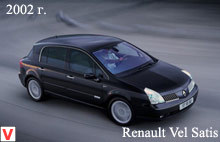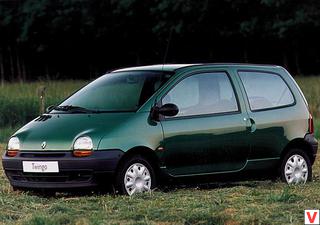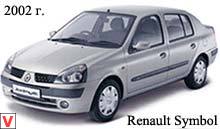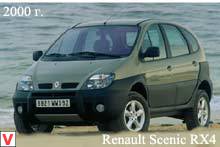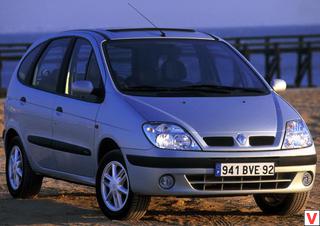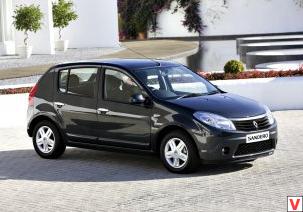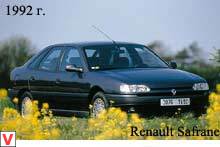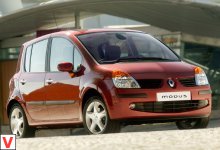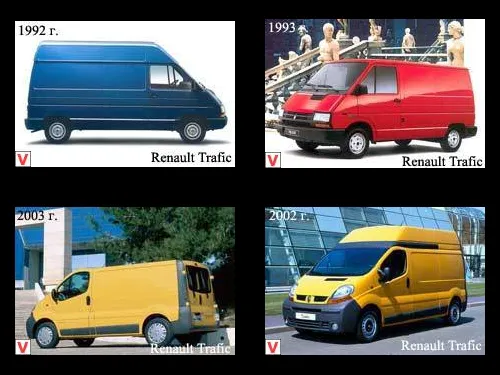
Renault has been engaged in front-wheel delivery vans since the late 1950s. The first generation of cars called Trafic appeared in 1980. It includes front-wheel-mounted frame-carrying vans, minibuses, chassis platforms and flatbed trucks with an index T, rear-wheel frame-mounted flatbed trucks and chassis with a cab under the index P, and since 1985 - all-wheel drive minibuses and trucks with an index V. Thus, the family models Renault Trafic combines all three types of modern layouts. In addition to the type of drive, the family is divided into five different options for the total mass and, accordingly, carrying capacity.
So, the front-wheel V8 T800 had a total weight of 2100 kg and a load capacity of 800 kg, T1000 - 2300 and 1000 kg, and T1200 - 2700 and 1200 kg, respectively. The rear-wheel drive truck P1300 has a carrying capacity of 1,275 kg (1,450 kg), and in all-wheel-drive V it is 2,550-2,700 kg and 1,150–1,300 kg, depending on the type of body. Overall dimensions of a short-base van: length is 4542 mm, width is 1905 mm, and height is 2018 (with a usual roof) or 2424 mm (with “high”), useful volume is 5.3 and 6.6 m3, respectively. With a base of 3200 mm, the overall length increases to 4942 mm, and the capacity ranges from 6.3 to 7.8 m3. The 4x4 model has 7.2 m3.
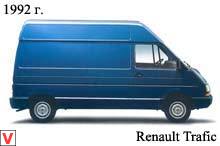
Capacity of a minibus made on the basis of a short-base van, up to eight passengers. The rear door is made of double swing. Halves of the doors open 180 degrees. Loading height from 475 mm for vans to 1060 mm for flatbed trucks. The engines were installed longitudinally, which made it possible to achieve a good loading of the front driving axle. The main carburetor 1.4-liter 48-hp, since 1984, the installation of a more powerful 1.65-liter 65-hp with a 5-speed manual gearbox or a 3-range automatic began, and from 1987 a 1.7-liter The 68-horsepower engine, and on the all-wheel drive model is a 2.0-liter 82-horsepower.
Installing a diesel engine (2.1 liters, power 65 hp) led to the fact that because of the more cumbersome power unit had to push the grille. In 1987, the model T1200 was renamed the T1300 because of the increased carrying capacity by 100 kg. The first significant modernization of the exterior of Trafic was carried out in 1989, then the elements of the front part were changed, in particular: the hood, fenders, headlights, grille. They improved the design and finish of the seats, the soundproofing of the cabin, at the same time, on average, they increased the load capacity of all models by 100 kg and gave them new indices: T900, T1100 and T1400.
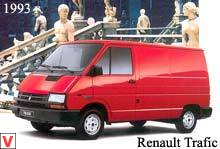
The main power units were diesel: 1.9 l, 61 hp and 2.5 liters, 76 hp, as well as a 2.2-liter injection. A year later, a radio with built-in loudspeakers and an improved interior trim for vans appeared on the models in the standard version. From 1992, they began to install a central lock, and on the T1100 model, a second sliding door appeared on the left side. The total number of options with regard to the types of engines, drives and bodies has reached 51.
In 1997, the Trafic exterior again slightly updated. But it could not save the essentially outdated model. Against the backdrop of more modern counterparts, ergonomics of the driver's seat and trim with a rectangular design utilitarian dashboard are not relevant. However, it is worthwhile to pay tribute to the Renault Trafic of the first years of production, which earned popularity and enjoyed steady demand from small and medium-sized businesses. In 2001, the new Renault Trafic delivery van entered the European market.

The car was offered in two versions: with a short (3100 mm) and long (3500 mm) bases, with a maximum carrying capacity of 1,200 kg, and the largest useful volume of the cargo compartment - 6 cubic meters. In addition to the van, a cargo-passenger and passenger version of the Renault Trafic. The latter has a lounge with 9 seats (including the driver). The second and third row of seats are equipped with seat belts, the seats fold easily and quickly. All Renault Trafic are equipped with a wide sliding side door on the right. Endowed with rich transformation capabilities, Trafic is offered with numerous configuration options for doors (side and rear) and rear seats (2nd and 3rd rows).
The line of power units offered: two diesel engines of 1.9 liters (80 hp and 100 hp - turbo) and a six-valve gasoline engine of 2 liters and 120 hp. The power plant is assembled with a 6-speed manual gearbox, which allowed not only to improve the dynamics of acceleration, but also to reduce fuel consumption. In a modern cabin, everything is comfortable and ergonomic, everything is “at hand”. Renault Trafic is one of the safest full-size vans on the market. The basic equipment includes disc brakes of all wheels, ABS with electronic brake force distribution EBV, height-adjustable seat belts with pretensioners and force limiters. In 2002 he received the prestigious title “Van of the Year”.
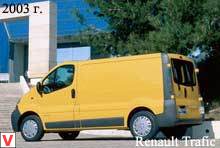
In 2003, Renault engine engineers developed a new engine for the Trafic series. This is a 2.5-liter turbodiesel, which has become the most powerful in the range of power units. It is based on a weaker model with a volume of 2.2 liters and adds the latest developments in the field of engine building. The system of direct injection Common Rail new generation has increased the engine power up to 135 hp at 3500 rpm The engine is aggregated with a 6-speed manual transmission, giving significant savings when working outside the city. In the mixed "European" cycle fuel consumption is 8.6 l / 100km.
In 2003, Renault Trafic got another passenger version, which received the brand name Passanger. This 8-seater car is perfect for both family and business use. Its package includes: cruise control, electric exterior mirrors, central locking, power windows front windows, power steering and much more. For the safety of the Trafic Passanger are the ABS and EBD systems, as well as disc brakes on all wheels. Airbags are provided for the driver and front passenger, for the remaining passengers there are three-point belts with pretensioners and chairs with head restraints and load regulators in the first and second row. For the Passanger version there are four power units.
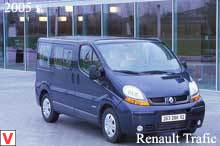
One gasoline engine with a working volume of 2 liters and three diesel engines: 1.9DCi (82 and 100 hp.), 2.5 Dci 16V16 (135 hp.). The engines comply with the environmental requirements of Euro 3. Developers fully endowed the Passanger with comfort and elegance, so today it is one of the most attractive cars in its class in terms of price and quality. So, trying to best meet all the requirements of modern business, Renault presents three versions of the new Trafic: Fourgon, Combi and Passenger.
Trafic Fourgon is the ideal vehicle for successful work related to the transport of goods. Trafic Combi - 9-seater bus with a wide range of interior transformation. Due to its versatility, practicality and cost-effectiveness, it can be used for a variety of tasks. Trafic Passenger - the bus of the increased comfort (7-8 places) focused on professional activity. It is also designed for entrepreneurs who need a car, not only for work, but also for relaxing with family or friends. Immediately striking is his swift appearance with drop-shaped headlights, clearly defined cab lines separating it from the body as a whole, and a powerful bumper.
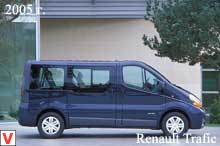
Convenient, comfortable, multifunctional Renault Trafic is a great helper for business and large families. In 2004, a new development by Renault, the concept car Trafic Deck'up, was presented at an auto show in Brussels. It is a cross between a minivan and a double cab pickup. For the basis for the novelty, they took the Trafic model chassis, which was shortened by 80 millimeters, and the wheelbase was expanded by 21 millimeters. The design is almost completely changed, although the main features of the Trafic are preserved.
Only the nose part of the car remained. The exterior of the front end is characterized by “transparent” headlights and new bumpers. The back door now goes down and does not open to the side. The interior space is decorated in a modern style.
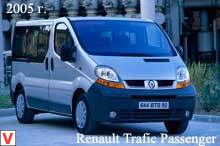
Transformable seats are installed in the second row, which allows you to turn to the rear compartment passengers. It is noteworthy that the rear of the car can serve as a cargo compartment, and part of the cabin. The dashboard is made in a light beige color. The cabin will comfortably accommodate four passengers, each of whom received an individual seat. In addition, the Trafic Deck'up can accommodate two more passengers who will be forced to settle for folding seats in the luggage compartment, but there is no need to waste time installing additional seats.
Trafic Deck`up is equipped with all-wheel drive, which, together with increased ground clearance allows you to overcome off-road. In the role of the main driving force is a 135-horsepower 2.5-liter dCi16V engine. Manual transmission has 6 levels.
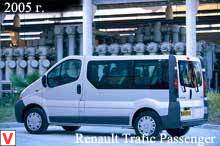
Another feature of the Renault Trafic Deck'up is the front doors hinged towards each other and the missing central pillar. You can also note the design of the front and rear seats, which allows you to rotate them at an angle of 180 degrees.
